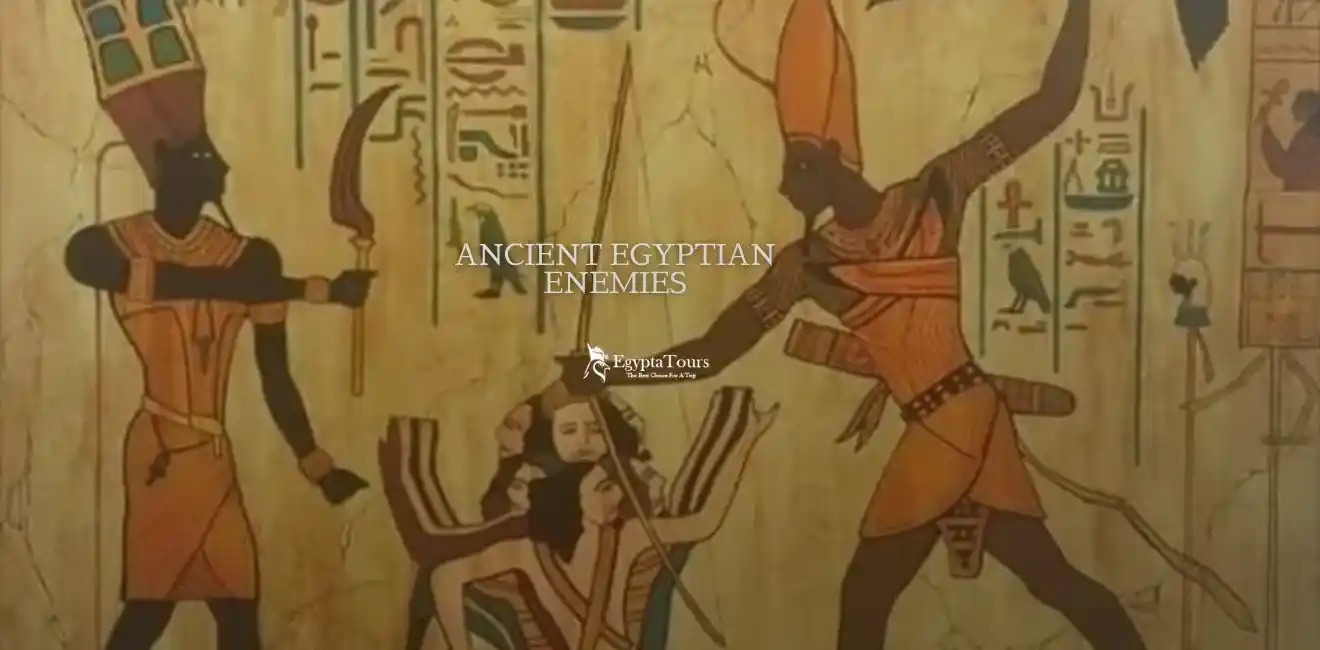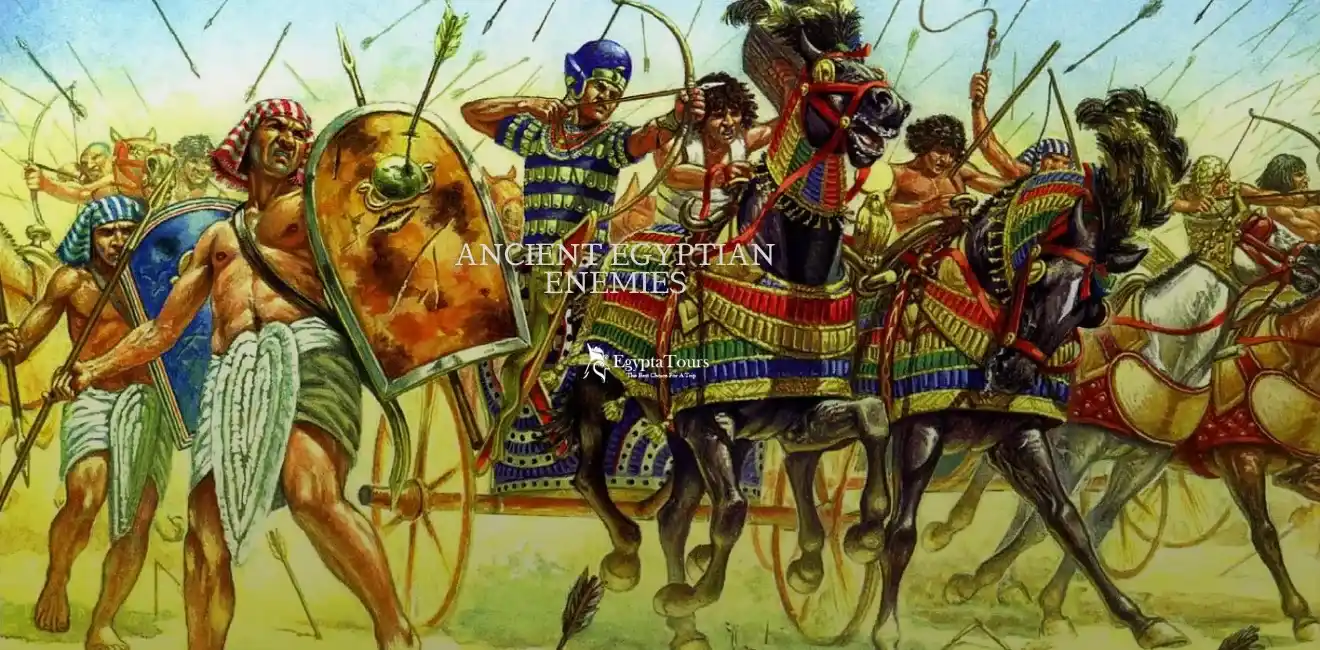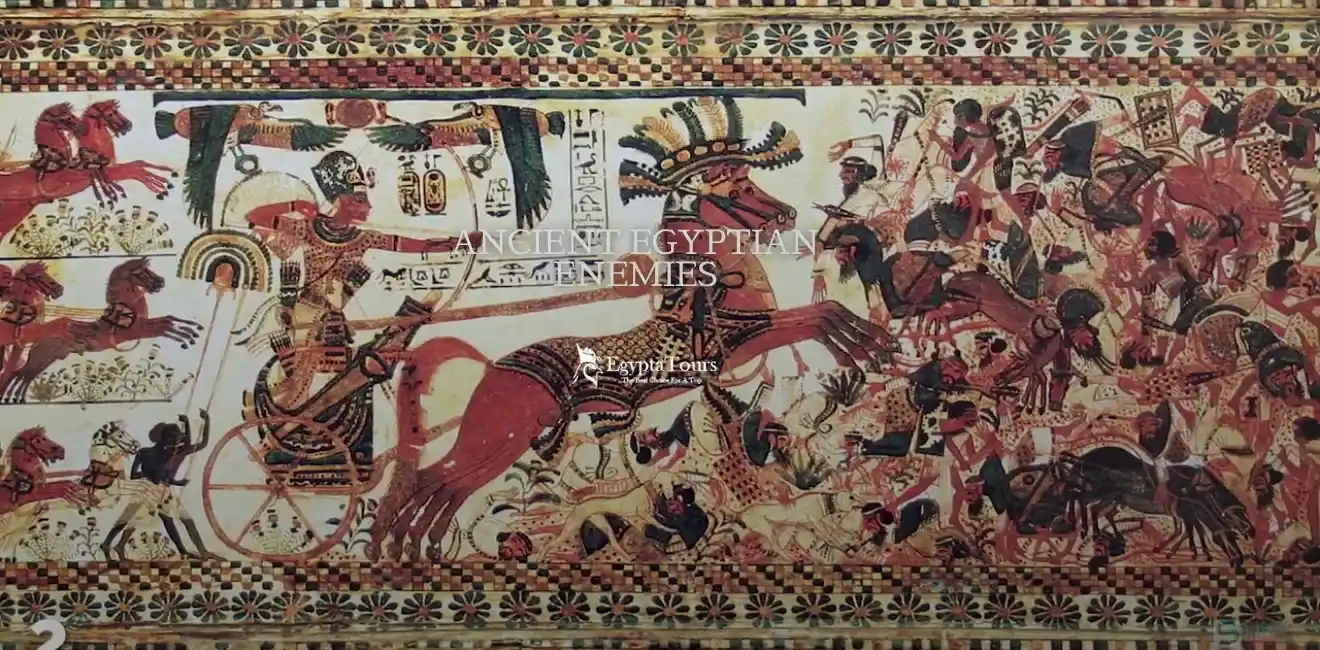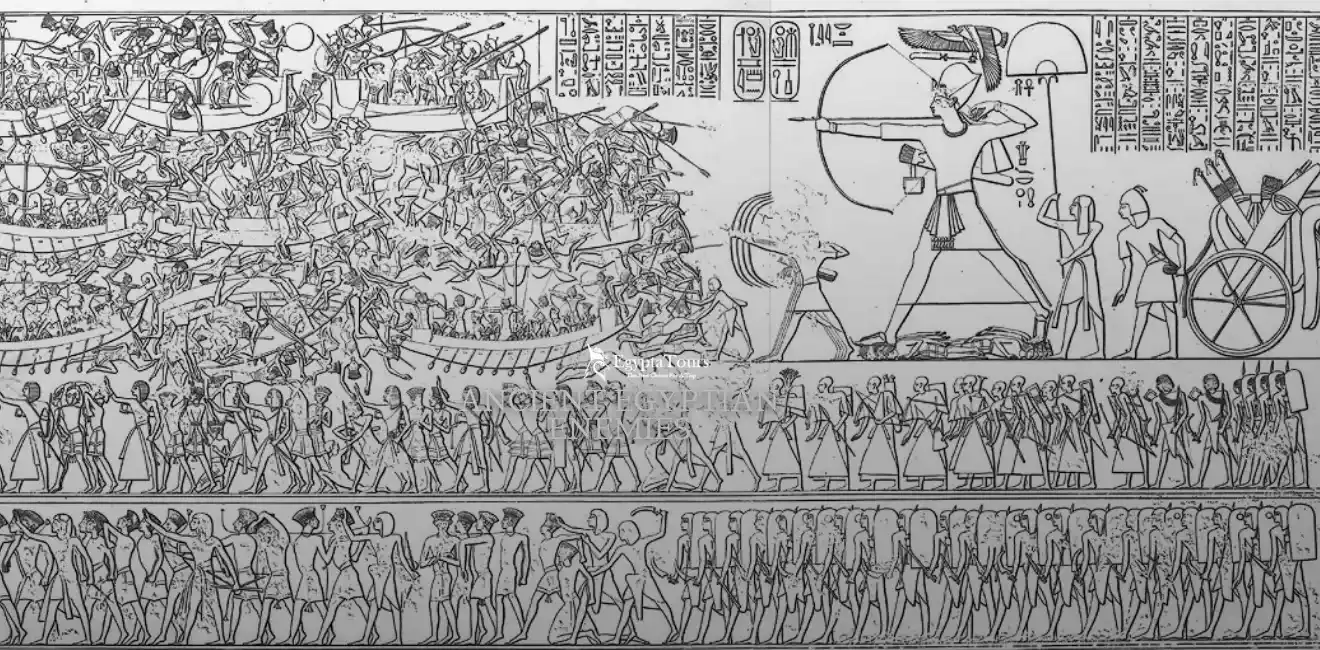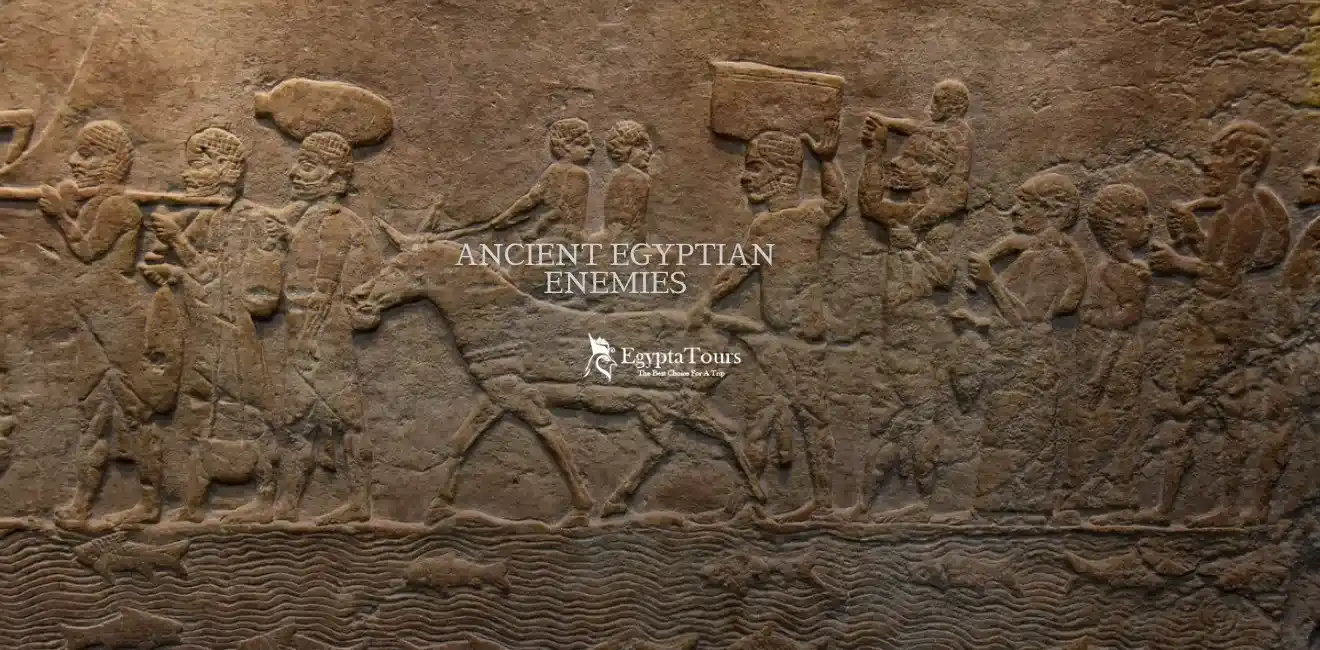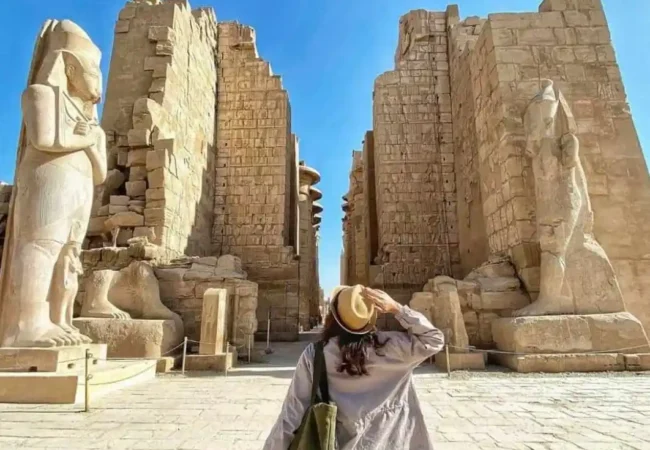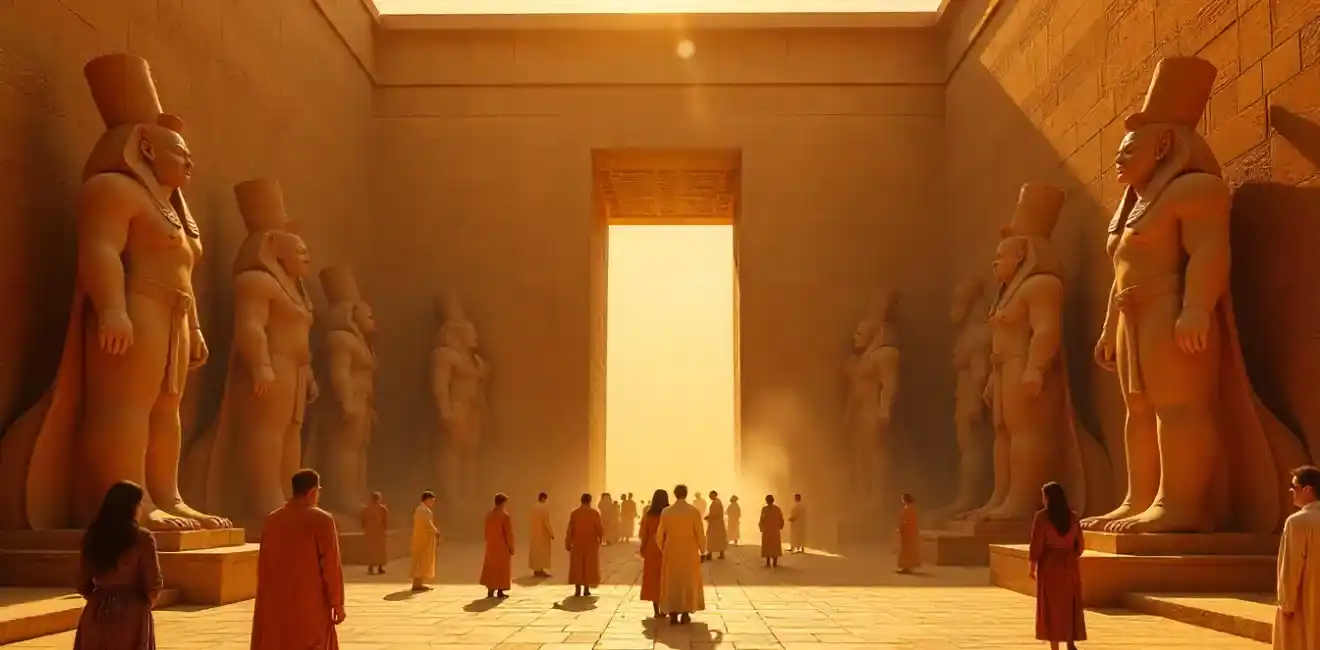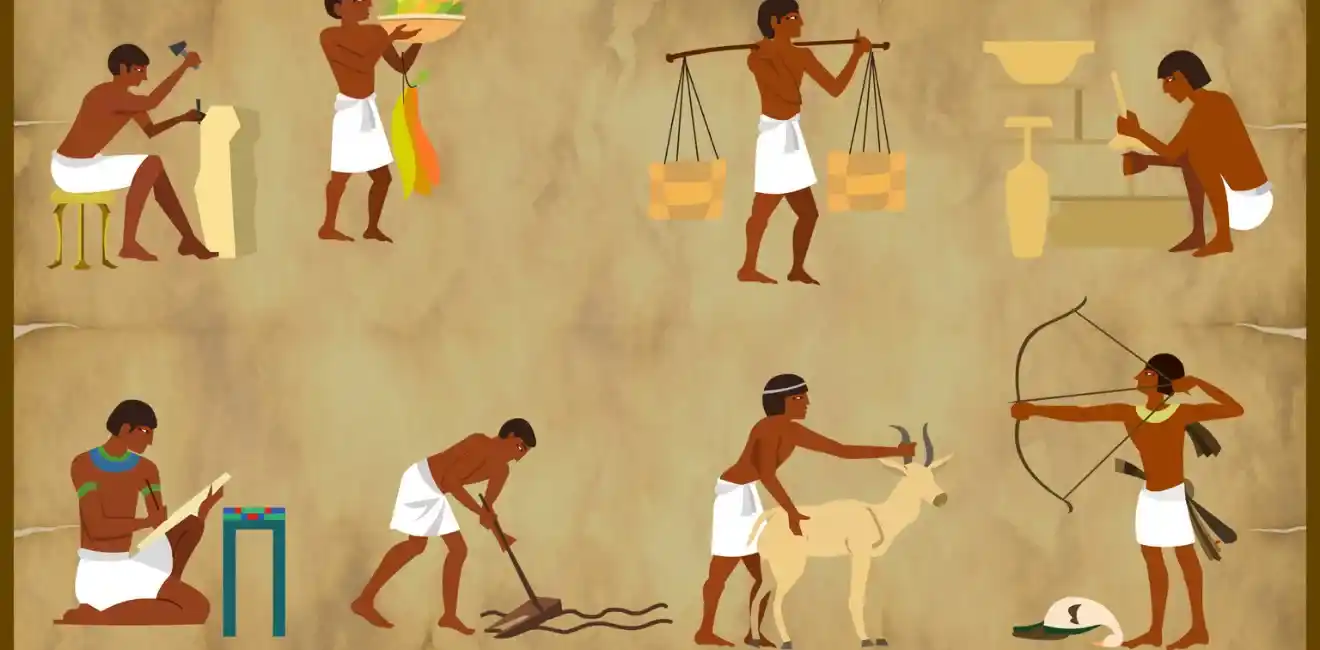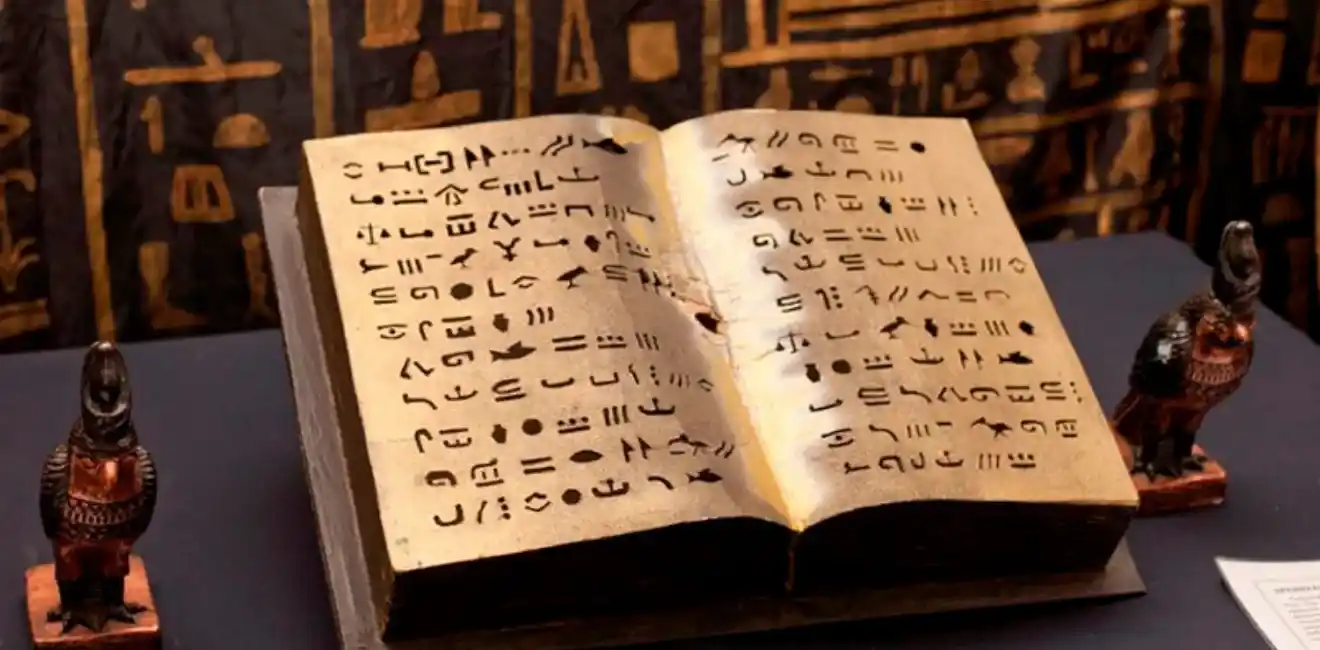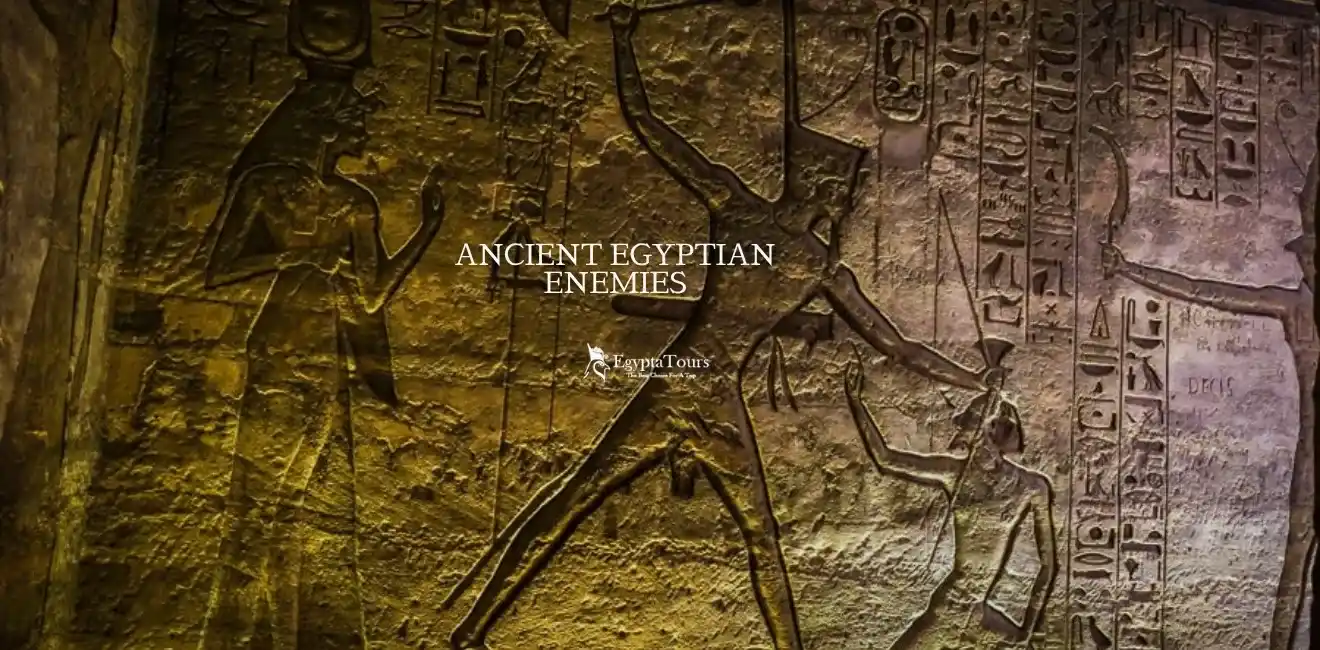
Fierce of Ancient Egyptian Enemies Through the Ages
The term “Nine Bows” was used in ancient Egypt to refer to the ancient Egyptian enemies and was considered a comprehensive symbol for all those who threatened the country’s security and unity.
The meaning of this expression changed from era to era according to existing threats, and there was no fixed list of hostile nations. However, the Nubians and Asians remained among the most important adversaries whose names were associated with the term throughout the ages.
The number nine did not represent a specific number of ancient Egyptian enemies, but rather was used to denote multiplicity and multiplicity. The number “three” referred to a plural while “nine” expressed a complex plural i.e., an innumerable multitude of adversaries and covetous people.
Although the names of these enemies varied throughout the ages they were depicted symbolically as nine semicircular arches divided into three groups representing hostile nations in general.
In drawings and engravings the Egyptians always depicted them in professional positions shackled and defeated before the king to emphasize his superiority and authority.
The Egyptians meticulously documented these victories on the walls of temples and tombs as living proof of their ability to confront the enemies of ancient Egypt whether they were alone or allied with internal enemies.
The Meaning of the Nine Bows
The ancient Egyptians enemies called “Khu,” a name they used to denote anyone who posed a threat to Egypt’s security and stability. They also referred to the homeland of these enemies as “Ta Seti,” meaning “Land of the Bows,” a region located in southern Egypt that represents what is now known as Nubia where the Kushites and Nubians lived.
The number nine did not define an actual number, but rather represented absolute multiplicity. In the ancient Egyptian concept number was not merely a mathematical value but a symbol of abundance. Therefore “nine” was used to symbolize the multiplicity of ancient Egypt’s enemies their diversity in location and origin.
Although the people of the south initially lived within stable relations with Egypt their shifting intentions and their pursuit of control over the country led the Egyptians to consider them among their opponents.
They attempted to seize power and claim that Egyptian civilization belonged to them which prompted the Egyptians to assert their superiority and identity through clear visual symbols.
What are the nine types of arches?
In ancient Egypt threats didn’t only come from abroad. Two types of enemies posed a direct threat to the state’s security and stability. The first was the external threat coming from beyond its borders, and the second emanated from within the country.
Here are the most prominent enemies:
The External Enemy
The external enemy was anyone who sought to penetrate Egypt’s borders or control its lands. The most important of these forces were the sea tribes and Asian groups such as the Hittites in addition to the Mitannians Persians, and Libyans. Their motives varied between looting and domination, and the Egyptian army often confronted them forcefully throughout the ages.
The Internal Enemy
Ancient Egyptian enemies were individuals or groups who lived within Egypt but were not loyal to it. This type of enemy often mobilized during periods of political weakness whether during the rule of a weak king or during foreign occupation.
Some were of non-Egyptian origin such as Bedouins from Asia Nubians settled in the south, or Libyans living in Egypt’s oases. Others were Egyptians who had deviated from allegiance such as greedy ministers or priests who supported chaos for personal gain.
Treachery and Coordination with Enemies
The problem with the internal enemy lies in its ability to communicate secretly with external enemies making it a dangerous tool that helped destabilize the country from within. Its loyalty was not to Egypt but to its own interests making it a threat to any ruler who did not exert strong control over the state.
The Hyksos and Their Military and Cultural Influence
During a period of political turmoil during the Second Intermediate Kingdom a movement of West Asian immigrants known as the Hyksos developed in the Nile Delta and ruled the northern regions.
The fall of the Egyptian state was not solely due to a brutal invasion, but rather the result of a gradual transfer of power in which the Hyksos exploited the weakness of the central government to declare themselves official kings.
Their most important achievement was the introduction of advanced warfare methods including chariots complex bows, and bronze weapons which later influenced Egyptian technology itself. These weapons changed the face of Egyptian warfare and made them reliant on them by the kings of the New Kingdom after the expulsion of the Hyksos.
This period also witnessed a cultural fusion. The Egyptian administrative structure remained in place, but they incorporated religious rituals and artistic concepts from the cultures of the Levant which helped fuel an artistic and architectural renaissance with new ideas that later developed.
The Sea Peoples and Their Repeated Attacks
In the 12th and 11th centuries BC Egypt faced successive invasions by the Sea Peoples a maritime alliance often described as coming from the Mediterranean.
Their famous confrontations with Ramesses III at the Battle of the Delta and Djahy were decisive and were depicted in meticulous detail on the walls of his temple at Mut.
The Egyptian military strategy in these wars was characterized by coastal defense. They set sea traps and deployed masked archers on the shore using flaming arrows to sink attacking ships. They succeeded in thwarting mass landings. Although their precise identity remains controversial some recent studies suggest that a number of them were related to the Aeolian, Lycian, or Philistine peoples.
They brought with them building tools and household equipment indicating their intention to settle in Egypt, but were repulsed by the Egyptian fortress’s response.
The Libyan Tribes and the Sea Peoples Alliance at the Battle of Perire
In about 1208 BC, Libyan tribes formed an alliance with a portion of the Sea Peoples to attempt to invade the western Delta, but King Merneptah responded forcefully at the Battle of Perire (possibly in the western Nile Delta).
The Egyptians claimed thousands were killed and thousands more were taken prisoner as Egyptian reports indicate This battle was a clear message that Egypt would not tolerate border threats.
Merneptah also used repressive measures such as the public execution of invaders as part of a political strategy of intimidation to ensure stability. Although the attack was recorded as an external threat archaeological documentation indicates that the attack was limited in scope and did not leave significant traces of destruction making the battle more of a symbolic event than a direct geopolitical shift.
Ashurbanipal and His First Invasion of Egypt (673–671 BC)
Under Ashurbanipal Assyrian expansion into Egypt began with a campaign in 673 BC aimed at reducing the influence of Egyptian alliances against them. This campaign was partially successful, but a decisive attempt was repeated in 671 BC. With larger armies and better planning, in 671 BC, Ashurbanipal succeeded in capturing Memphis and capturing members of the royal family.
He then reorganized the government in the north with loyal governors appointed by him forming the first direct Assyrian administration of Egypt. However his rule was not always stable. Upon his return he faced rebellions from the Taharqa and Nubians which led to a subsequent reassertion of control under Ashurbanipal.
Ashurbanipal and the Final Fall of Thebes (667–663 BC)
After the death of Ashurhaddon Ashurbanipal took power and launched a new campaign in 667 BC to counter Taharqa’s return to Egypt. He defeated him reoccupied Memphis, and then continued on to Thebes.
In 663 BC Thebes fell after Taharqa or his successor withdrew. Ashurbanipal declared that he had destroyed the city looted its monuments, and exiled its inhabitants displaying the spoils in Nineveh.
However, archaeological evidence does not reveal complete destruction, but rather the survival of the local administration and the continuation of funerary activities. This event officially ended Kushite rule in Egypt and paved the way for the rise of the Twenty-sixth Dynasty under Psamtik I who was crowned with Assyrian support but soon assumed independence.
Conclusion
In conclusion, tracing the ancient Egyptian enemies reveals successive eras of political and military challenges faced by the Egyptian state throughout the ages. The ancient Egyptians demonstrated a great deal of resilience and organization in protecting their lands and identity which helped ensure the continuity of their civilization and its long-lasting influence on human history.
FAQS
Who were the enemies of the ancient Egyptians?
The most important ancient Egyptian enemies were the Hyksos the Sea Peoples, the Hittites the Assyrians, and the Persians along with some Libyan and Kushite tribes in the south. The nature of hostility varied between military invasion border conflict, and regional competition for influence and wealth.
Who was the greatest pharaoh?
King Ramses II is considered one of the greatest pharaohs. His reign lasted for more than 66 years, and witnessed remarkable architectural and military achievements. He is famous for the Battle of Kadesh the peace treaty with the Hittites, and the construction of great temples such as Abu Simbel and Ramessesion.
What were the dynasties of ancient Egypt?
The dynasties of ancient Egypt are divided into three phases: the Old Kingdom, the Middle Kingdom, and the New Kingdom. The number of ruling dynasties reached 30 and these dynasties extended from the unification of the two lands by King Menes until the Persian invasion of Egypt in the sixth century BC.







